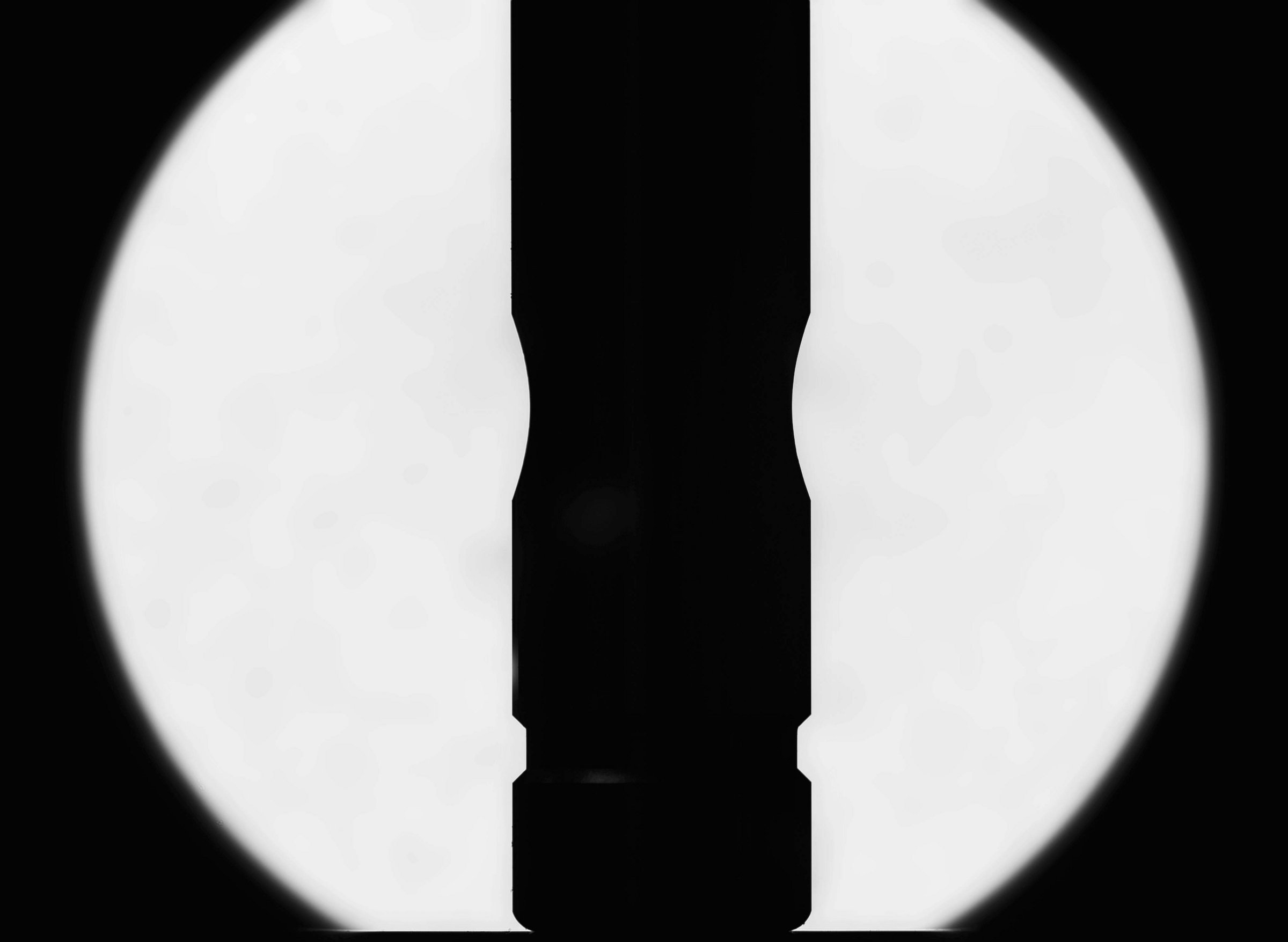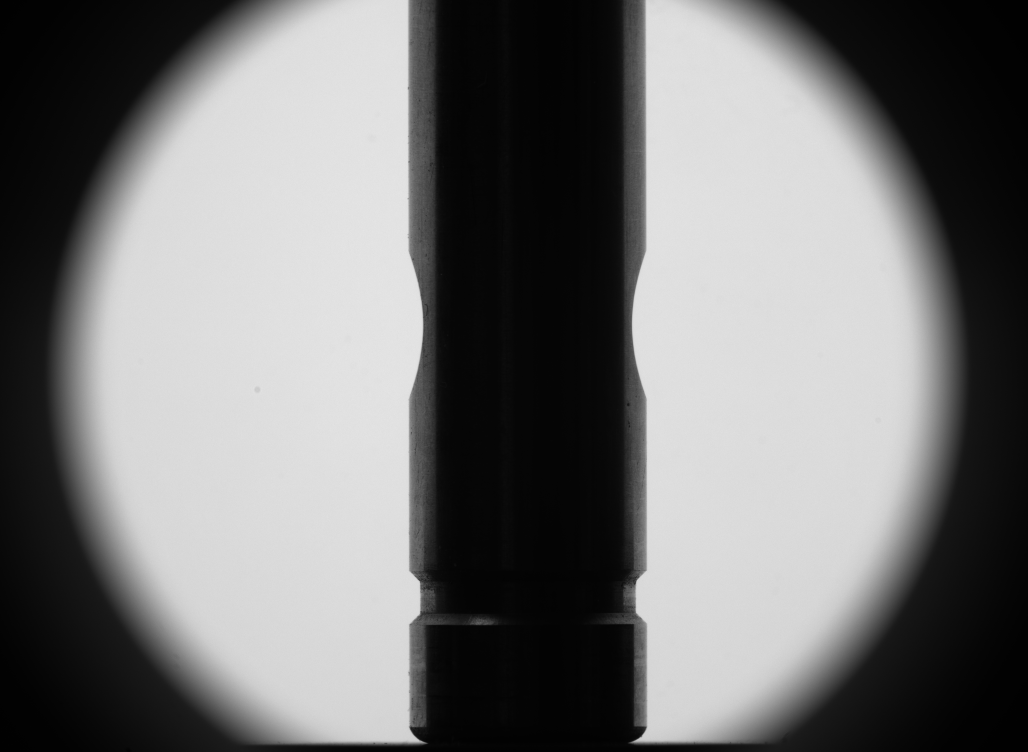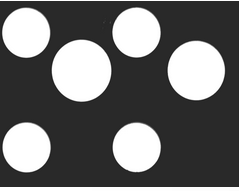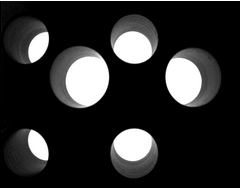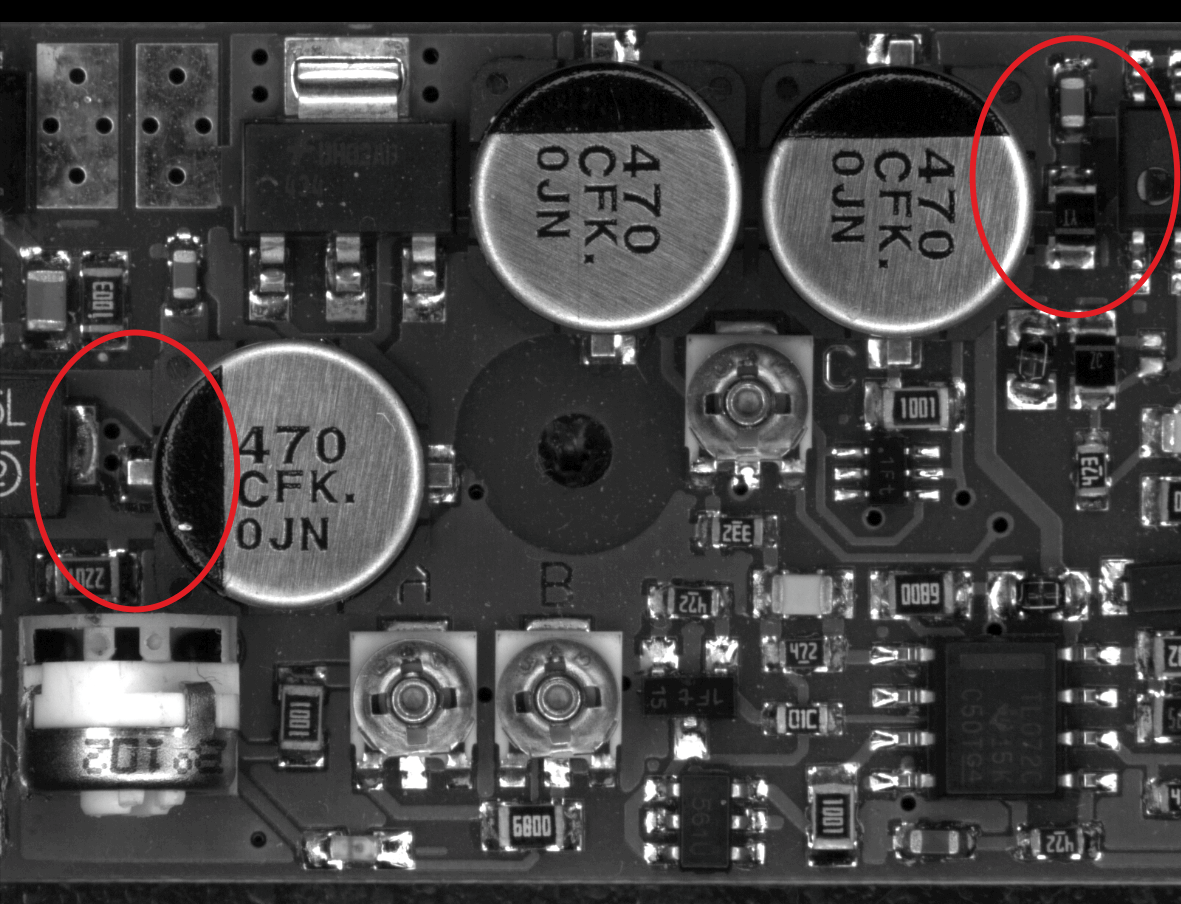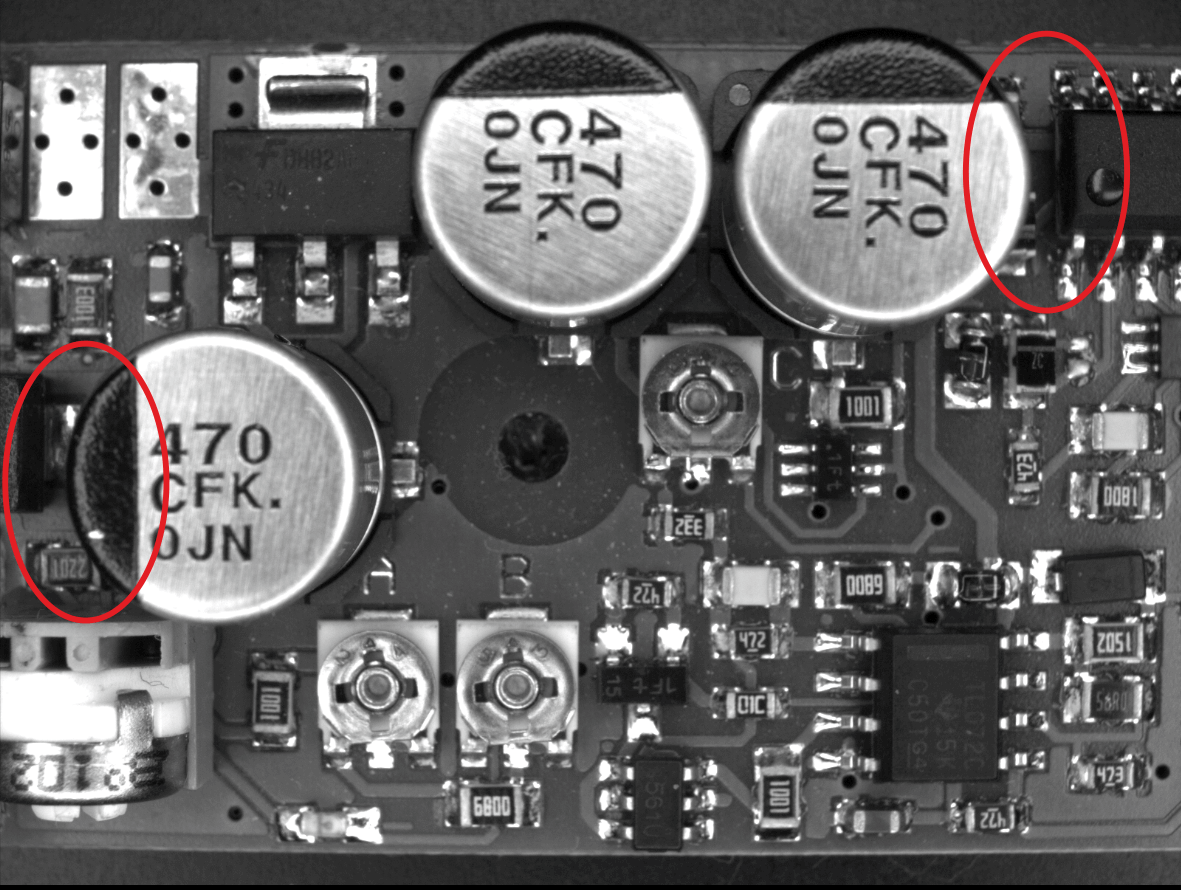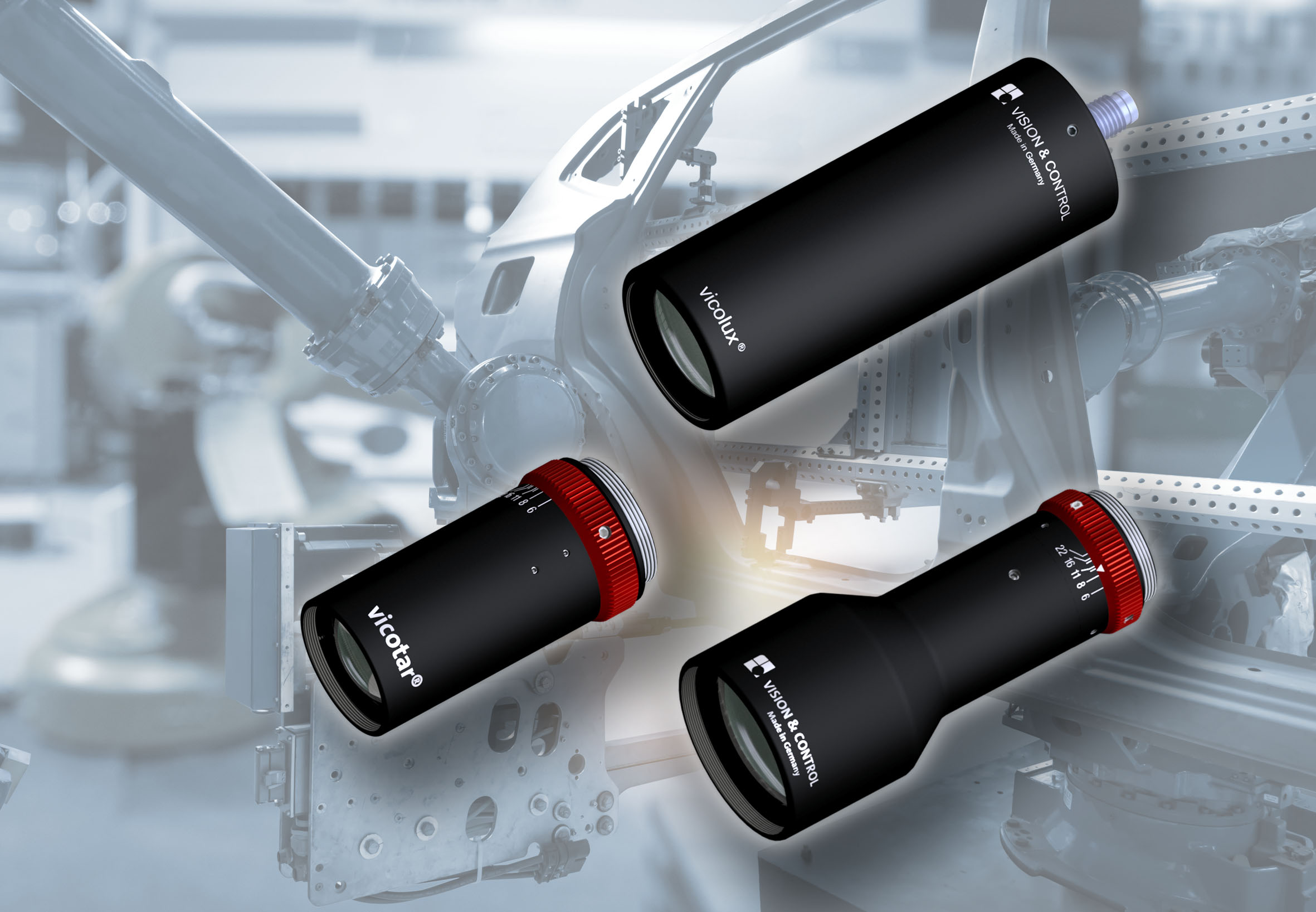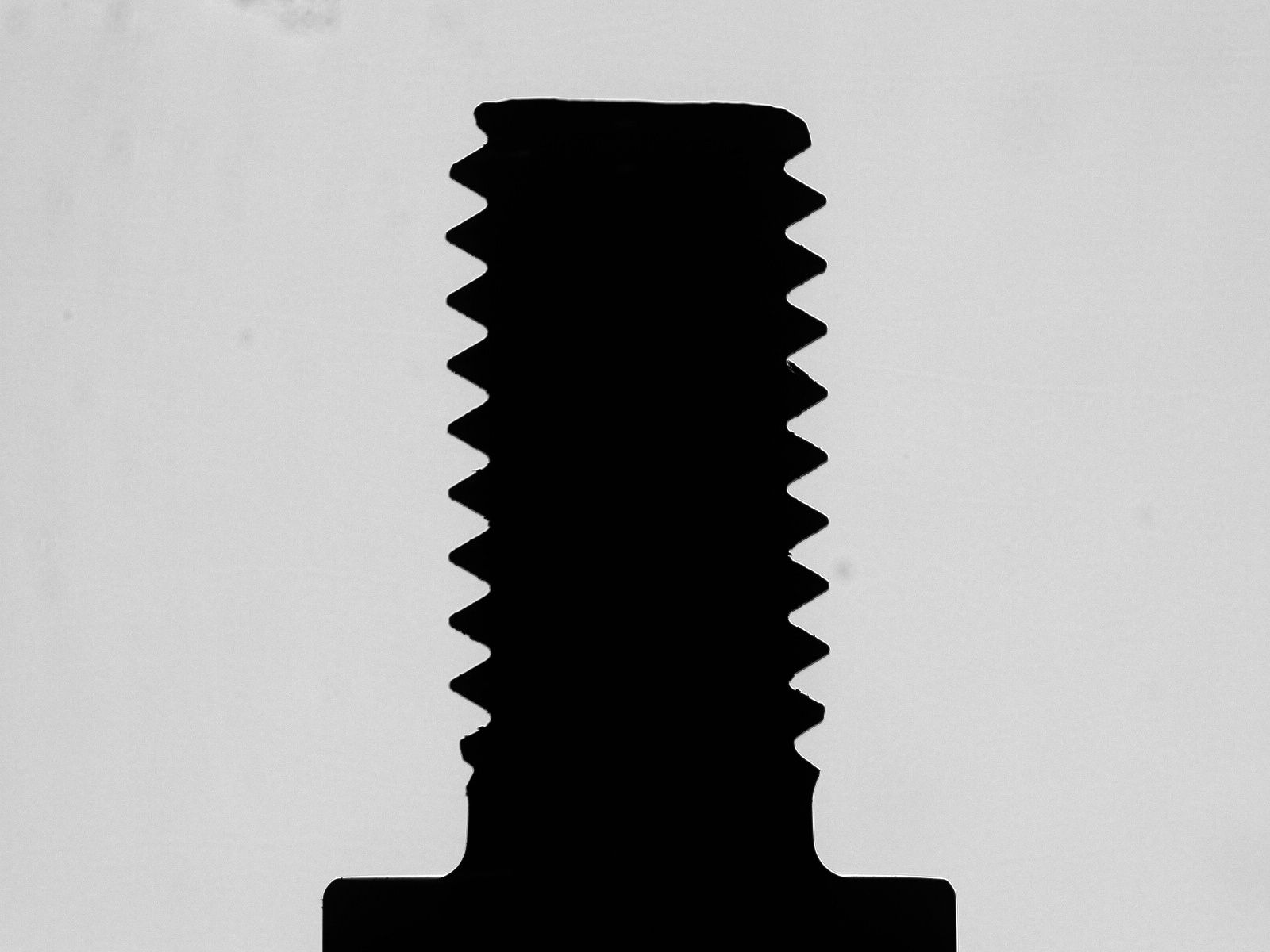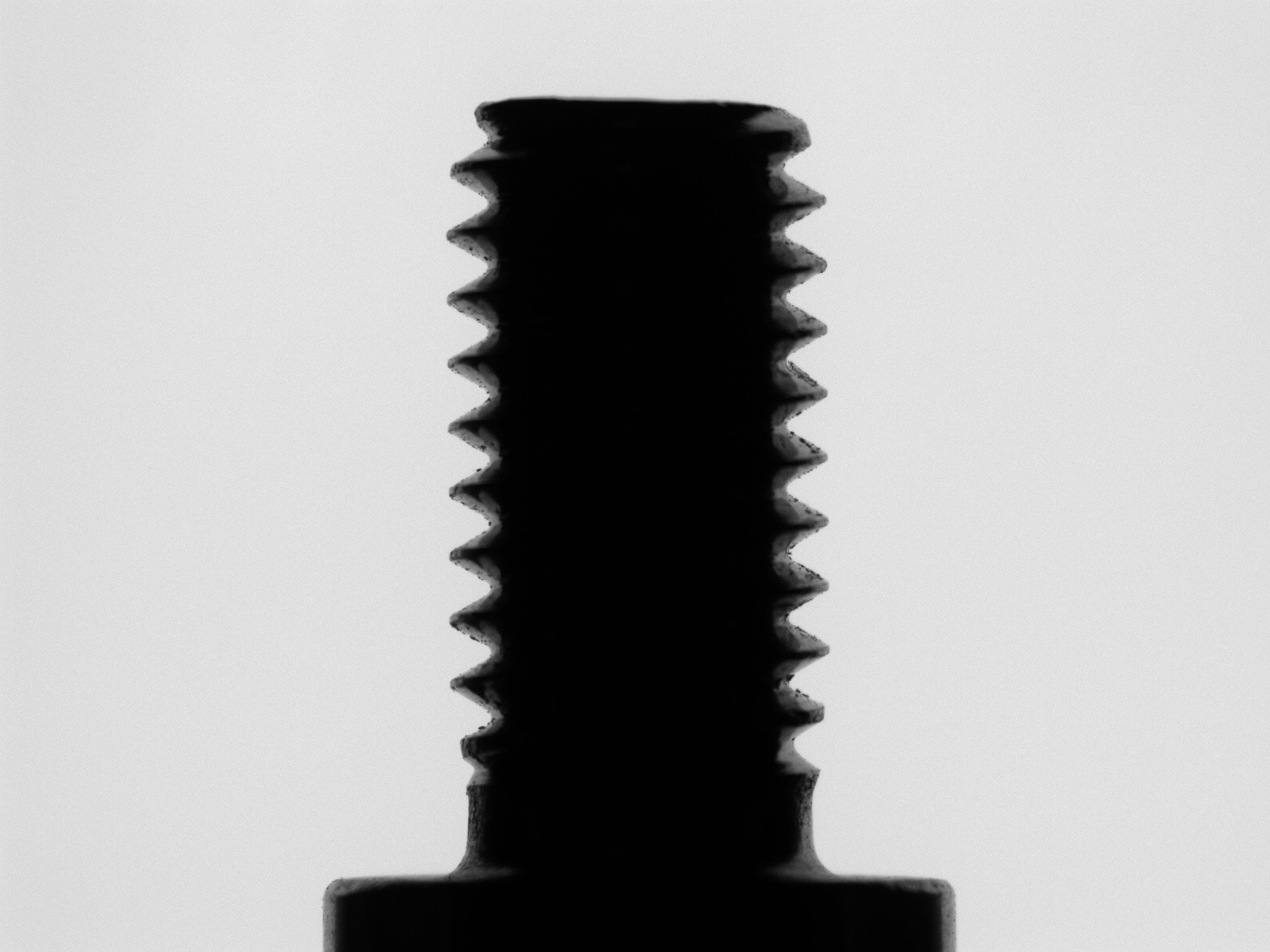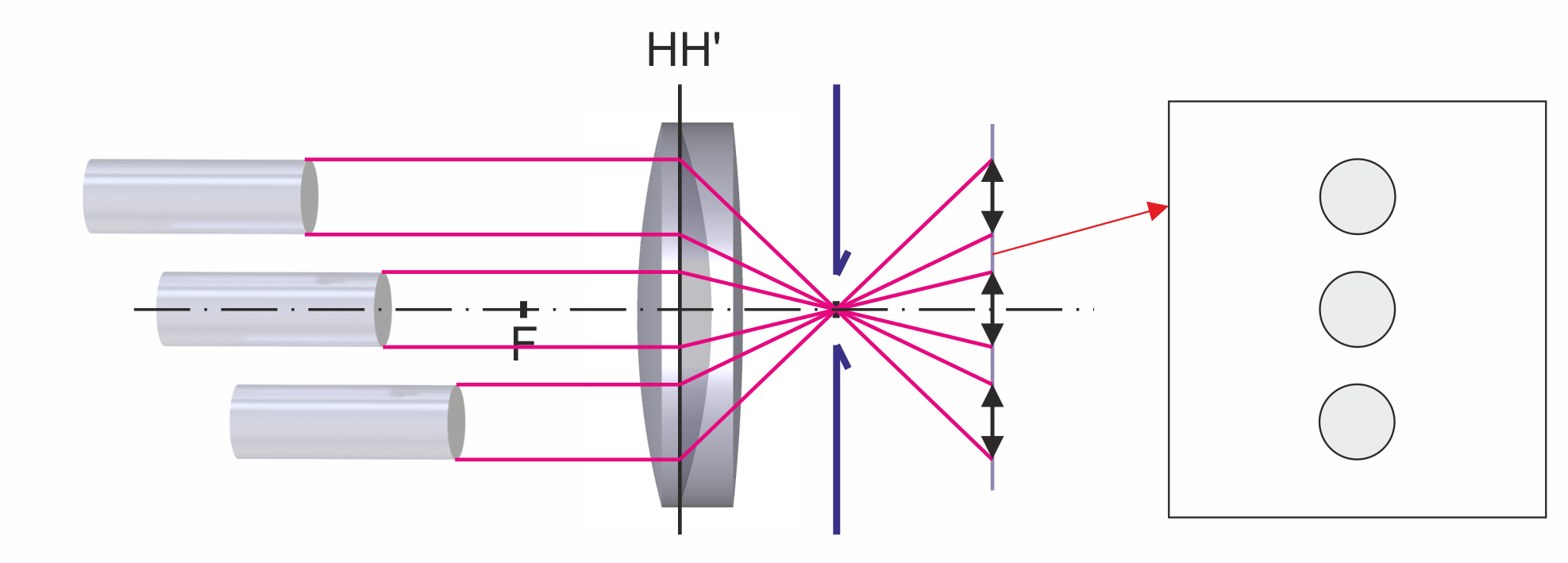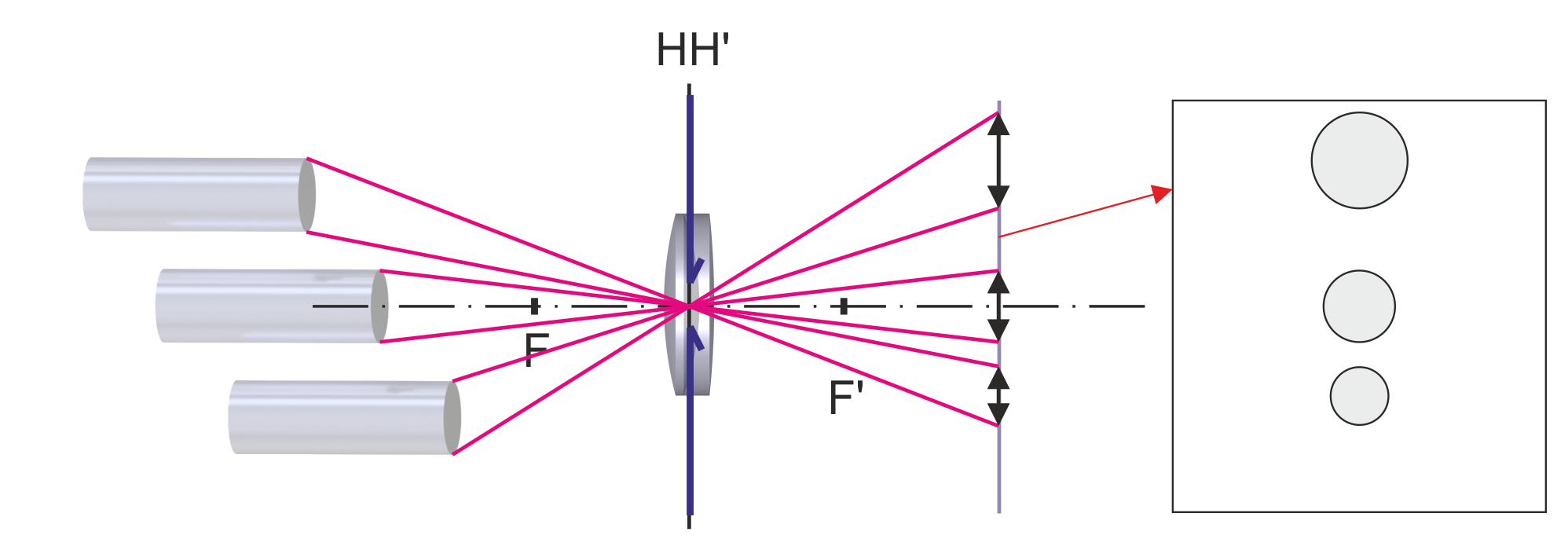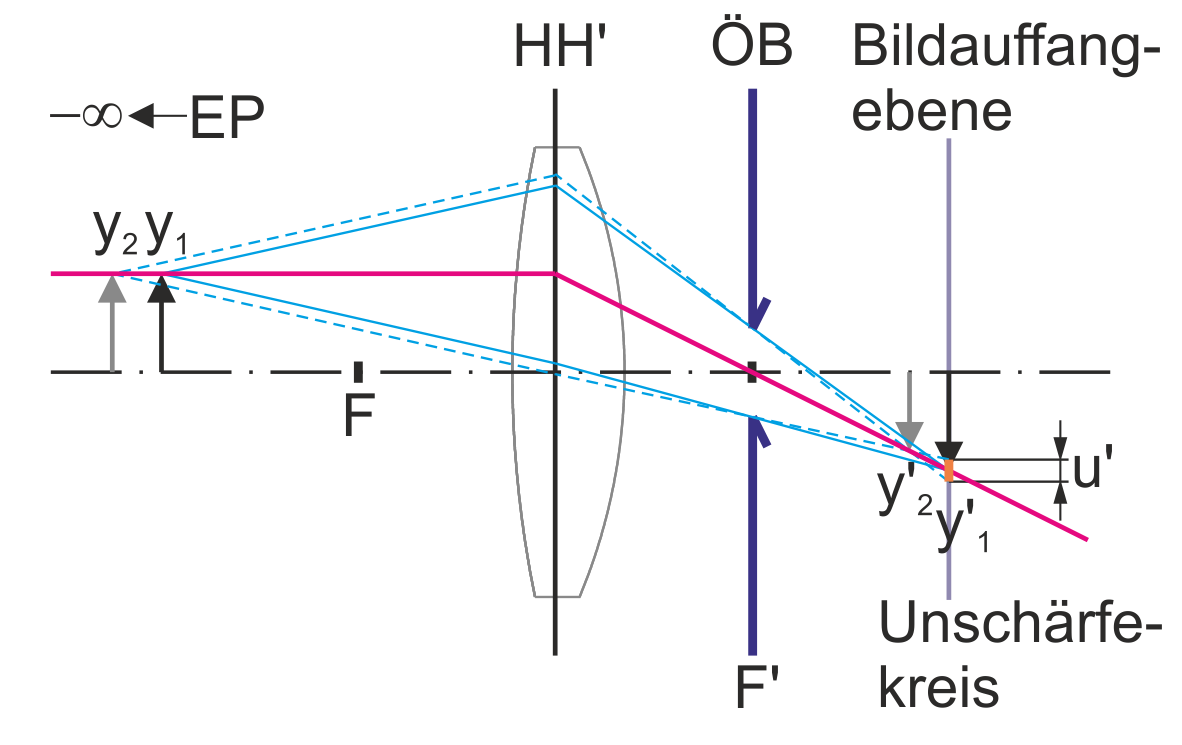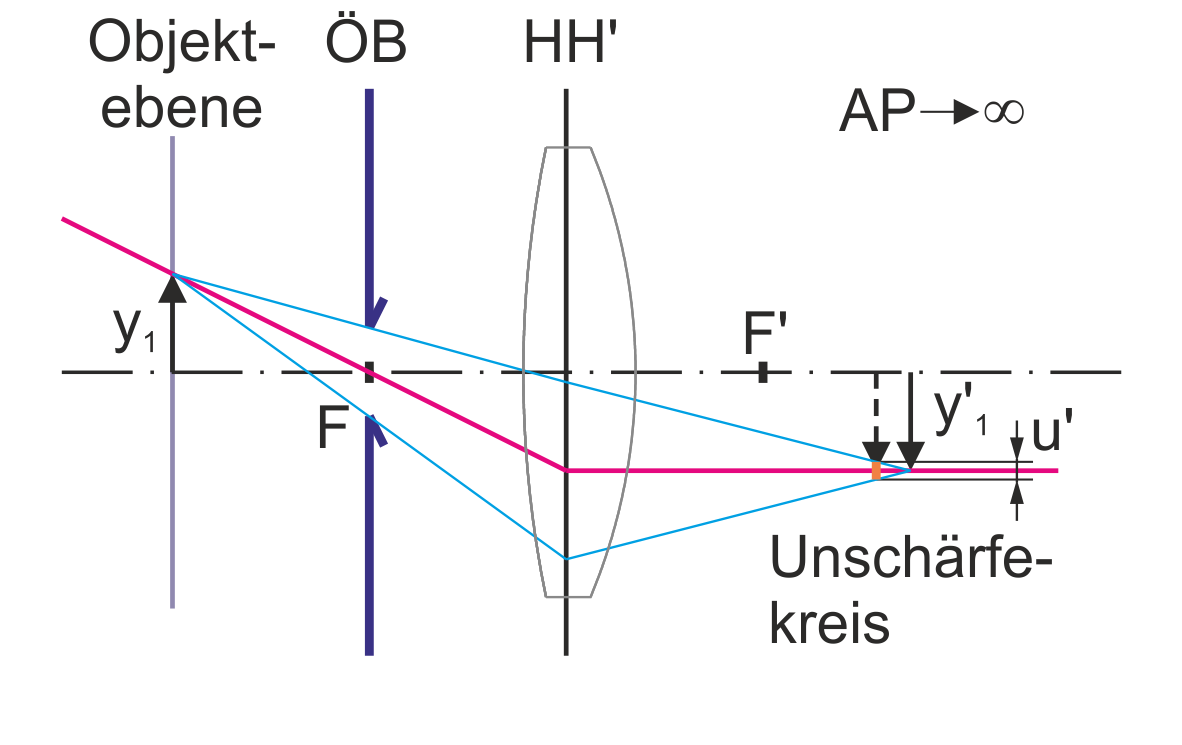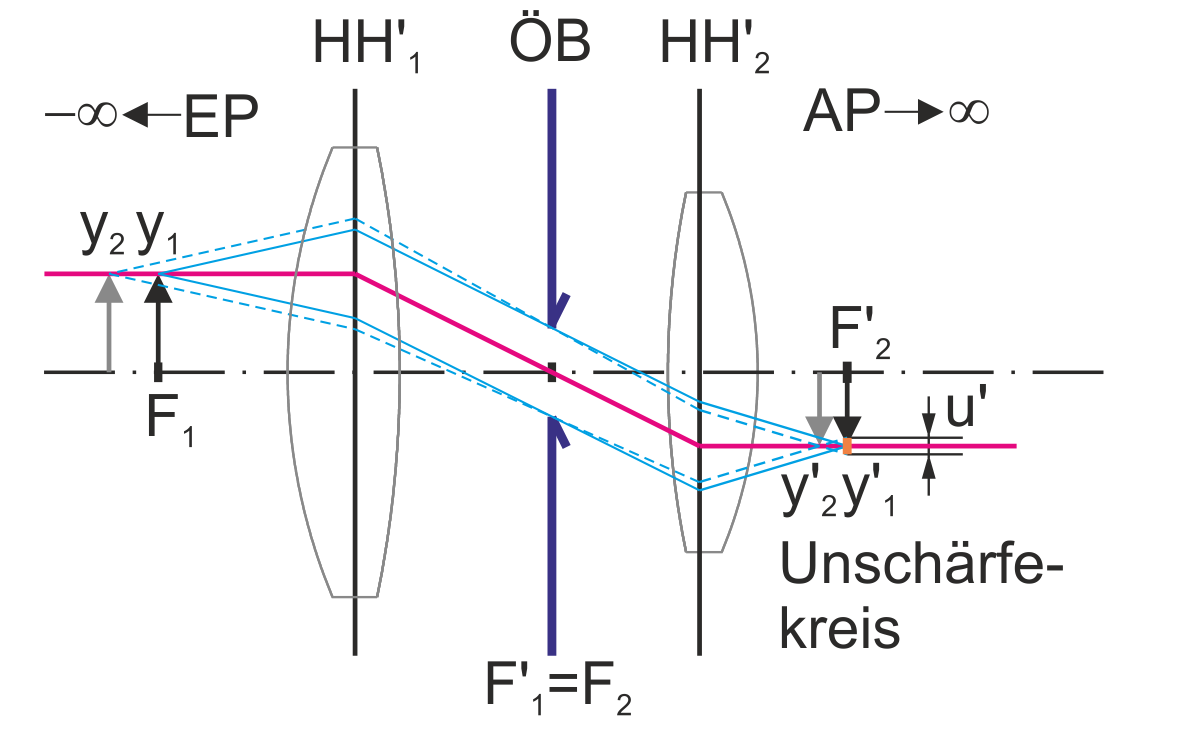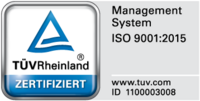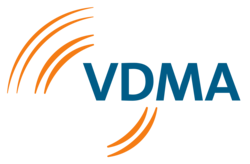vicotar® telezentric lenses
- Have diffraction limited imaging quality
- Are with adjustable aperture
- Image many object field sizes from a few micrometres to several centimetres
- are available for all common sensor formats (1/3" to 1.2", DX format, 35 mm format)
- are available in different lens series
Blue Vision (compact), bi-telecentric (both sides), standard, large field, microscope lenses.
- A wide range of suitable illuminators is available
- Depending on the application, telecentric illuminators, single-mirror illuminators, area illuminators or ring illuminators are suitable
- Have a wide range of accessories and many combination products: UV blocking filters; colour filters lens holders, deflection mirrors; beam splitter unit, vision systems
- Development of customised lenses possible
With telecentric imaging, the main rays in the object space are all parallel. This is achieved by placing the aperture diaphragm in the image-side focal point of the front optics. The main beam is forced to be a focal beam on the image side, which means that it must run as a parallel beam on the object side. Due to this operating principle, parts of the same size are imaged in the same size at different distances from the lens.
This still works even if the parts are arranged offset to the optical axis. If the lens is free of distortion, the result will always be images of the same size for parts of the same size.
The image is free of perspective. Hidden edges, as can occur through perspective imaging with an entocentric lens, are thus avoided.
Object-side telecentrics
 | Main beam to the outermost field point |
Objects 1 and 2 are the same size, but at different distances from the imaging optics. The aperture diaphragm (ÖB) is located at the image-side focal point of the optics. This means that it is imaged towards infinity on the object side. The entrance pupil (EP) is therefore at infinity. As a result, the main rays run parallel on the object side. On the image side, they are congruent for a certain object height. If the image is captured in the Gaussian image plane of object 1, the image of object 2 in the same plane appears somewhat blurrier but the same size. This is because, due to the coincidence of the main rays on the image side, the circle of confusion to the outermost field point of object 2 lies symmetrically around the image point of object 1. The permissible blurring here depends on the required resolution or depth of field.
Image-side telecentrics
Here, the aperture diaphragm is mapped to infinity on the image side, as it is located in the focal point of the optics on the object side. The exit pupil (AP) is therefore at infinity, which means that the main rays are now parallel on the image side. This makes the optics invariant to sensor shifts, again within the limits of permissible blur.
Bilateral telecentricity
Bilateral telecentricity or double-sided telecentrics combine the advantages of object-side and image-side telecentrics. For the construction of such lenses, the image-side focal point of the first lens section must coincide with the object-side focal point of the second lens section. The aperture diaphragm is then located in this plane. Thus, such lenses correspond to the principle of an astronomical telescope. The magnification is determined by the focal length ratio. In addition, this design offers better compensation of optical aberrations such as distortion and lateral chromatic aberration due to the symmetrical position of the lenses around the aperture. This makes it possible to realise lenses of the highest imaging quality. Their overall length is typically somewhat greater than that of purely object telecentric lenses.
Image description: Depending on the position of the centre of perspective Z, the object contours of a cylinder appear differently sized relative to each other.
Perspective is a property of optical imaging independent of resolution or depth of field: it is responsible for the size impression of an object in comparison to its surroundings. Three cases can be distinguished: the entocentric, telecentric and hypercentric perspective.
The resulting size impression can be explained on the basis of the visual rays with which an object is viewed. These are the light rays that pass from the object point through the centre of the eye's entrance pupil. The greater their inclination, the angle of vision, the larger the object appears. Objects seen at the same angle of vision appear the same size to the eye.
Entozentric
The natural perspective with which the human eye sees is the entocentric perspective. The perspective centre Ze lies in front of the object from the direction of observation. Here, objects appear larger the closer they are to the observer. Based on experience of the actual size of an object, the distance of the object can thus be estimated. In the case of depth-extended objects, the natural perspective impression results in the foreground contours of the objects obscuring the deeper ones.
Entocentric lenses realise the entocentric perspective.
Most photographic lenses and also most lenses in image processing are entocentric. Very small sizes possible, various qualities. With oblique top view, perspective errors occur.
For observation tasks, presence control, attributive inspection (part large/small, high/low), colour control. - The possibilities for measuring are severely limited (exceptions: flat, level parts, but only at constant s. working distance).
Telezentric
The centre of perspective lies at infinity in the direction of observation. The result: objects of the same size appear to be the same size both at long distances and at short distances. This impression of perspective can be created in the eye by an upstream optical instrument, such as a microscope, by mapping the pupil of the eye to infinity on the object side. Since all rays of vision now run parallel, the size of the objects is independent of the distance to the observer. This also means that it is no longer possible to make a statement about the distance of an object.
Telecentric lenses realise the telecentric perspective.
For inspecting and measuring on any spatial parts with holes, grooves or apertures at different heights - together with telecentric illumination, precision measurements are possible.
Hypercentric
The centre of perspective lies behind the object in the direction of observation. This makes an object appear larger the further away it is from the observer, i.e. exactly the opposite of the entocentric perspective. In order to convey this impression of size to the eye, an optical instrument is again required, for example a simple magnifying glass, which images the pupil of the eye in front of the object. This makes it possible, for example, to look at the lateral surface of a cylinder viewed from the front.
Hypercentric lenses realise the hypercentric perspective.
Special lens in industrial image processing for inspecting lateral surfaces.
Telecentric wide field lenses are a special form of telecentric lenses. Above a certain diameter of the front lenses of approximately 200 mm, the costs, weight and also the mounting effort of classical glass lenses increase considerably, so that industrial suitability can no longer be guaranteed. In order to capture large objects nevertheless, the front lens group is designed as a Fresnel lens. The entire lens can thus be realised in a lightweight design. This opens up new possibilities for the industrial use of telecentric lenses. Despite the use of the Fresnel lens, a good modulation transmission results when using a megapixel camera right into the image corners. A correction of the principle-related colour errors is not possible. Therefore, large field lenses should always be used together with monochromatic illumination. Telecentric large field lenses are possible up to a diameter of approx. 800 mm.
Telecentric large field lenses are used, among other things, for the inspection of car catalytic converters, heat exchangers, champagne bottles and for handling tasks in the semiconductor industry.
For a simplified lens selection, a lot of relevant information is already included in the lens name. The following guide is intended to make lens selection easier for you.
Step 1: The lens.
The maximum lens dimension determines the diameter of the lens. This is the first key figure in the lens name. In addition, the realisable object field dimensions are given for each lens in relation to the sensor format.
Step 2: Camera and sensor
Which lens mount does the camera have? How large is the sensor?
The second lens code shows the maximum sensor diagonal that the lens can serve. By default, our lenses have a C-mount connection. But lenses are also available for the M42 mount.
Step 3: The working distance
The third figure in the lens name is the working distance. Together with the lens length, it determines the required installation space. Here it must be checked whether the lens fits the mechanical boundary conditions of the place of use. Our deflecting mirrors and our extensive range of accessories allow maximum flexibility here.
Step 4: Optical quality parameters
The manual provides extensive information on the quality of the lens, such as depth of field and resolving power. In this way, the optimal aperture can also be determined. The pixel size of the sensor should also be taken into account. This limits the maximum resolvable spatial frequency via the Nyquist criterion. The sensor size, in turn, actually has an influence on the depth of field. After these considerations, it may well be necessary to change to another camera model with a different sensor size or a different pixel size.
You can get more information here or ask our team of experts for advice in this regard.
Examples:


